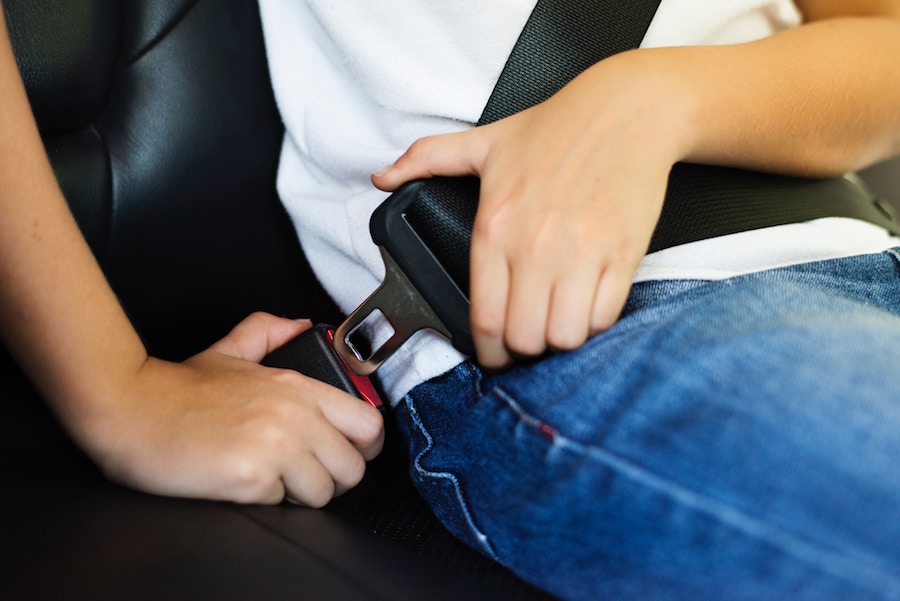Yesterday, the AAP offered revised car seat recommendations for children, and they’re a pretty big change from what we’re all used to considering. In their updated Child Passenger Safety statement, they offer 5 evidence based recommendations that you really should check out if you’re a parent, grandparent, care provider, or anyone who shuttles around kids.
Related: The 5 best car seats for kids, once they’ve outgrown that infant seat.
1. New Rear-Facing Car Seat Recommendations (Children 0-4)
Infants and toddlers should remain in rear-facing car seats as long as possible, up to the maximum height and weight limit for that seat. Most convertible seats allow children to ride rear-facing for 2 years or more, which means this may impact kids up to about age 4.
2. New Forward-Facing Car Seat Recommendations (Children 4-12)
Once outgrown, children can move to forward-facing car seats with a harness for as long as possible, also up to the highest weight or height allowed by their car seat’s manufacturer. That’s often 65 pounds or more. (See below for more on that.)
3.New Children’s Booster Seat Recommendations (Children 8-12)
When forward-facing seats are outgrown, children can transfer into belt-positioning boosters until the car’s standard lap and shoulder seat belts fit properly. This will often be when kids have reached at least 4’9″ in height, or between 8 and 12 year old.
(A statistic that stood out to us: booster seat use reduces the risk of nonfatal injuries among 4- to 8-year-olds by 45%, as compared to seat belt use.)
4. Lap and Shoulder Seat Belt Recommendations (Ages vary)
Nothing’s changed here: Lap and shoulder seat belts must be used for all children who have outgrown boosters, at any age. Also, it’s the law.
5. New Front Seat Child Passenger Recommendations
Finally, the AAP recommends that all children younger than 13 should remain in the back seat, regardless of height or weight.
I know that last one will be a huge disappointment for a lot of larger kids — my 11-year-old daughter has some friends who are practically my height! However, each time a kid moves up a level in each of these recommendations, the AAP reminds parents we’re always giving up some level of safety.
Dr. Benjamin Hoffman, one of the two experts the Council on Injury, Violence, and Poison Prevention who issued the statement, reasserts that “using the right car safety seat or booster seat lowers the risk of death or serious injury by more than 70 percent.”
That’s a significant number to consider.
The good news: Kids are safer than ever today, in part thanks to improvements in the cars we drive, a wider use of effective child restraint systems including boosters, stronger car seat laws in nearly every US state, and clearer recommendations from doctors and experts plus more public education programs.
So yay for that.

Of course while these are recommendations, we still think it’s important to exercise good parental judgment. For example, in our post about the 5 best car seats for kids who have outgrown infant seats, we mention that the Maxi-Cosi Magellan 5-in-1 Convertible Car Seat (shown here) grows with children up to about age 10, because it supports up to 120 pounds.
If you have a 120-pound 16 year old, obviously they’re not going to be cool with sitting in a children’s car seat. So don’t go on the car seat height and weight limit alone.
What is important is that your children are at the proper height and weight for a standard car seat belt to fit properly.
Because as Dr. Hoffman also reminds us, despite the improvements, car crashes are still a leading cause of death for children.
With 4 children under 14 dying each day from car crashes over the past 10 years (oof), it’s really helpful to know that small changes like these can literally save lives.
And if we’re going to have squabbles with our kids every day about something (“no, you can’t ride in the front seat on your 12th birthday”), this seems like a pretty good one to fall on our swords over. In the end, we’re the parents. We make the rules.
Visit the AAP site for their revised car seat recommendations for children, and for the data to help support these new guidelines.




Thanks for this Liz, I’m constantly confused by what’s the safest (both when I’m in the U.S. and the UK) way for my daughter to be in the car. This is a great tool.
Thanks again!